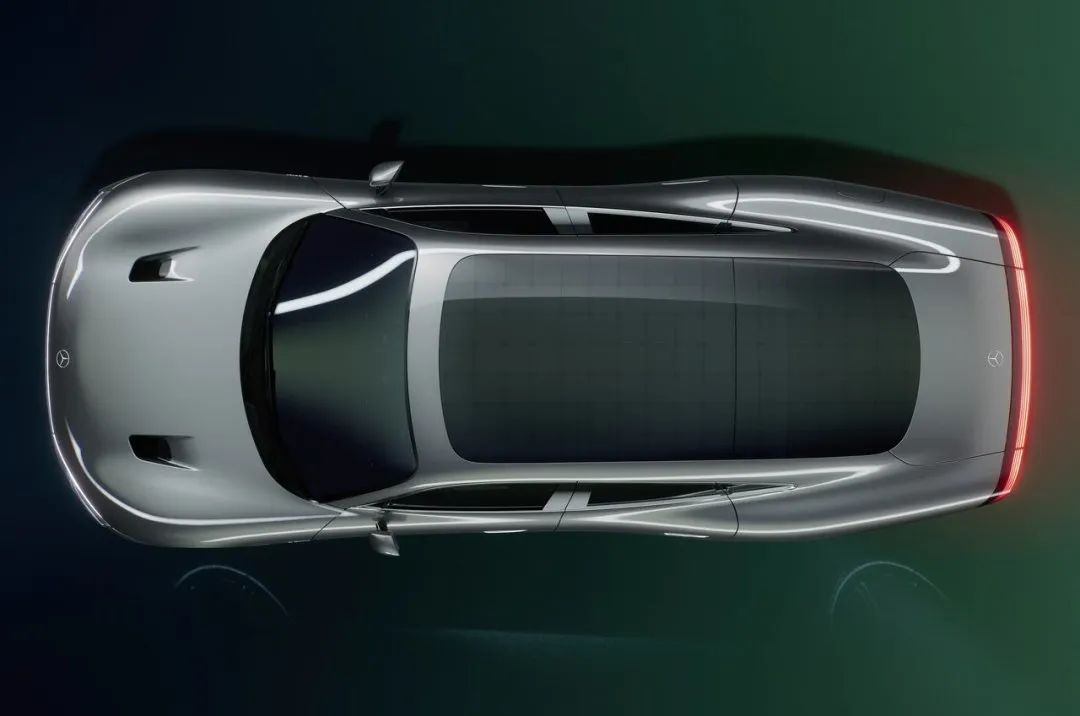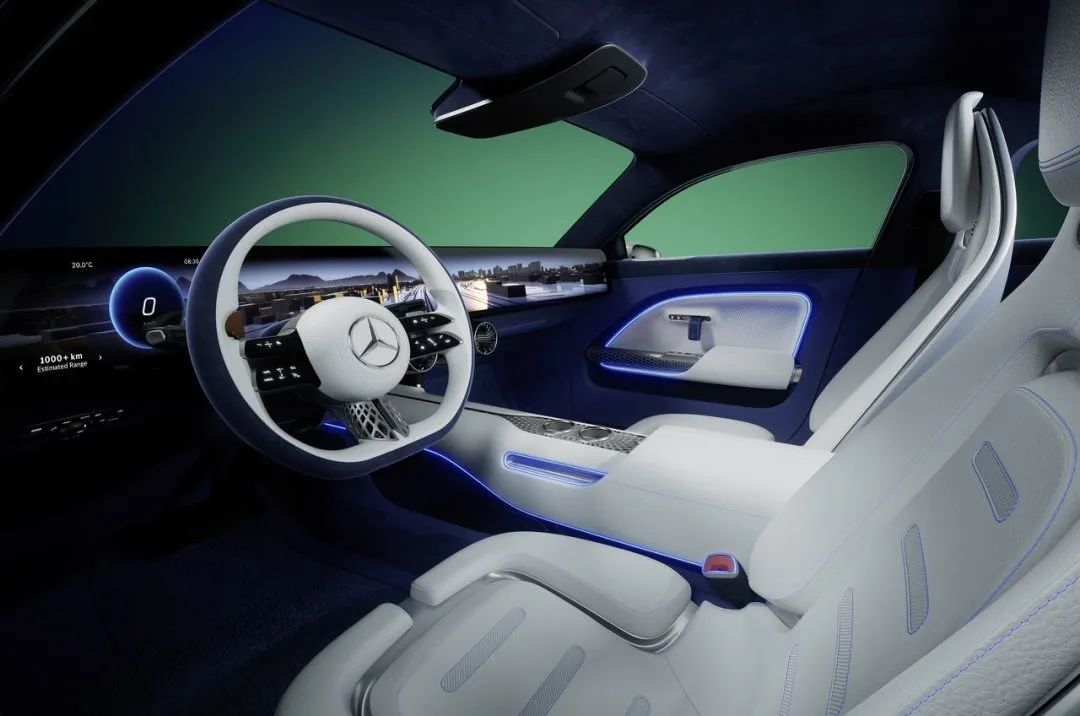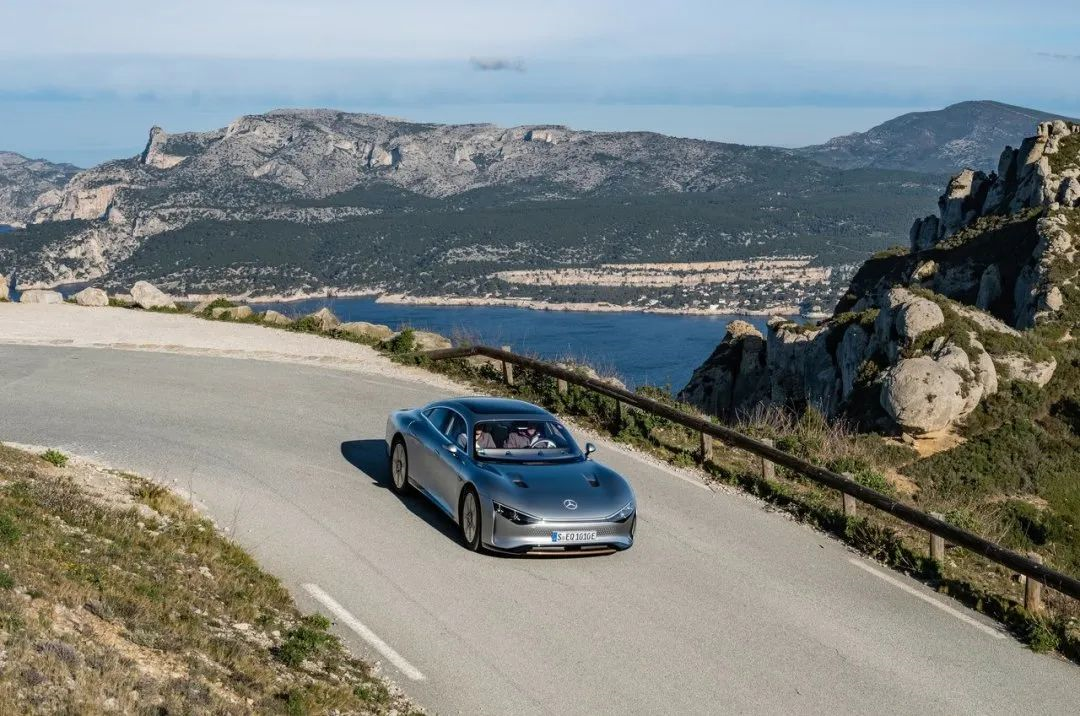Author: Knight Errant
Although Mercedes-Benz, the manufacturer of the world’s first car, did not take the lead in the new era of electrification, a tiger that does not show its power is never Hello Kitty. When the king of the old city awakens, the market is bound to welcome a new baptism. From EQC to EQA, EQB, EQV, EQS, EQE, and so on, the layout rhythm of the Mercedes-Benz EQ family can be said to have gone all out from 2018 to now. So much so that before we have fully remembered the positioning of the last Mercedes-Benz EQ model, the next EQ family model has started a new round of technological innovation.
At CES 2022 earlier this year, Mercedes-Benz officially unveiled the VISION EQXX (hereinafter referred to as EQXX) concept car, which, besides its breathtaking design, is also crowned as the “most efficient Mercedes-Benz ever”. Completed in 18 months with fixed-point development, a wind drag coefficient of 0.17, a 100-degree wind-cooled battery, energy consumption of less than 10kWh per 100 kilometers, and a range of over 1000 kilometers.
It seems that any data can directly or indirectly prove that EQXX is an advanced electric car, but for Chinese netizens who have seen enough car-making routines in PPT, these beautiful numbers on paper have long lost their appeal, especially the range of over 1000 kilometers, which can be easily ignored as long as XXXX driving conditions are added in front of it.
Fortunately, this time, Mercedes-Benz did not repeat the story of “The Boy Who Cried Wolf”. Just last week, Mercedes-Benz officially released the real-life test results of EQXX under actual road conditions. The test started from Sindelfingen in Germany and ended in Cassis, France, with a total distance of 1008 kilometers and a duration of 11 hours and 32 minutes. The entire journey included a variety of road conditions such as highways, mountain roads, tunnels, and passed through complex weather conditions such as wind, rain, humidity, and temperature differences. The average speed throughout the journey was 87.4 km/h, and the high-speed cruising speed was 140 km/h. After arriving at the destination, the vehicle energy consumption was displayed as 8.7 kWh/100 km, and there was still a remaining range of up to 140 kilometers. This means that, according to the normal cost of 1.1 yuan per kWh, the cost per kilometer is only 9 cents!
This means that EQXX is not only the electric car with the longest endurance ability, but its maximum real endurance ability of nearly 1200km will also become a “nightmare” for countless electric cars. While Mercedes-Benz has proven that pure electric cars can have a real range of more than 1000km, it has also proved itself to be the brand that still stands at the top of the automotive food chain with all its accumulated technology.

The reason why EQXX can achieve such exaggerated data naturally depends on every “black technology” on it. The waterdrop-like silky body curve not only achieves an ultra-low drag coefficient of 0.17, but also creates a frontal area of only 2.12 square meters. When the speed reaches 60km/h, the active rear diffuser can open automatically to optimize the airflow and further reduce the drag coefficient. Although Mercedes-Benz does not like to boast about aerodynamics as Lotus does, it is obvious that EQXX’s attainments in this area are enough to make Lotus bow in respect.

When Mercedes-Benz first announced that EQXX’s energy consumption per 100km was less than 10kWh, many people probably didn’t expect that its real energy consumption could be as low as 8.7kWh. If you don’t know what it means to use only 8.7 kWh to run 100 km, comparing it with the 20.1 kWh per 100 km for the Mercedes-Benz EQC should make you aware of the terrifying gap between them. It is the power unit specially developed by the F1 department and the engineers’ successful reduction of the transmission system’s losses by 44% that enable EQXX’s transmission efficiency to reach an astonishing 95%, which is the biggest reason why the vehicle can achieve such low energy consumption.

Whether brushing for lap times or endurance, extreme lightweighting is their common direction. EQXX adopts aluminum integral casting process for the rear window and rear panel, and replaces many heavy traditional design parts with lightweight single-structure castings. At the same time, the battery cover also uses sustainable carbon fiber-sugarcane composite materials derived from F1 racing technology. With an overall weight reduction of 20%, the overall vehicle weight of EQXX is only 1755kg, which is very friendly to energy conservation and endurance.
In terms of the battery pack itself, the 100 kWh energy storage of EQXX is almost comparable to that of the brand-new EQS, but the size of the EQXX battery pack has been reduced by 50%, with dimensions of only 2000mm/1260mm/110mm, and a weight reduction of 30%, weighing only 495kg, which is enough to fit into a compact vehicle in the later stage. This also means that Mercedes-Benz is actually preparing for future technology applications.

In addition, EQXX did not use semi-solid-state batteries, but adopted high-density batteries with a density of 400Wh/L. According to Mercedes-Benz official disclosure, the battery pack uses CTP technology, which also enables a relatively high specific energy of 202Wh/kg. At the same time, the vehicle is equipped with a 900V high-voltage battery system, which is also the first application of this technology.

In addition to the conventional battery pack, EQXX also has 117 solar cells placed on the roof of the car, and the energy produced there will act on the vehicle’s 12V system, such as entertainment, navigation systems, power accessories, and speakers. According to Mercedes-Benz official statements, by reducing the load of the drive battery, the solar roof can increase the vehicle’s range by about 25km in a journey of 1000km.

Since the advent of electric vehicles, they have had an advantage over traditional fuel vehicles, which is their kinetic energy recovery. Through this feature, EQXX can recover energy from almost any type of slope and braking, without involving mechanical brakes, thus making it possible to replace steel brake discs with light aluminum ones in the future.

As an electric vehicle with a “future” style, intelligent assembly is naturally indispensable. Its built-in intelligent energy efficiency assistant can provide the most efficient driving style recommendations according to energy flow, battery level, terrain, and even the direction and intensity of wind and sun, making driving easier.
Finally, EQXX is not a wild performance monster. Despite having a radical appearance that can rival a supercar, its character is quite gentle deep down. It has no four-wheel drive or jaw-dropping acceleration, but only a 180kW motor on the rear axle. To put it in comparison, EQXX is like a handsome guy with 8 abs but doesn’t drink or party, which is contrasting and unbelievable.

As planned, EQXX will start mass production in 2024. However, I personally think that instead of looking forward to the launch of EQXX, we should look forward to when Mercedes-Benz and other automakers could truly apply these cutting-edge technologies, including those still in the conceptual stage. Because we all know that it’s not hard for Mercedes-Benz to gain fans’ compliments like “EQXX is amazing,” but it’s difficult to enable ordinary consumers to enjoy the advantages and technologies of EQXX. Hopefully, when the day comes with a realistic range of 1000km, it won’t just be a high-end party that only top-level billionaires can afford.
This article is a translation by ChatGPT of a Chinese report from 42HOW. If you have any questions about it, please email bd@42how.com.
